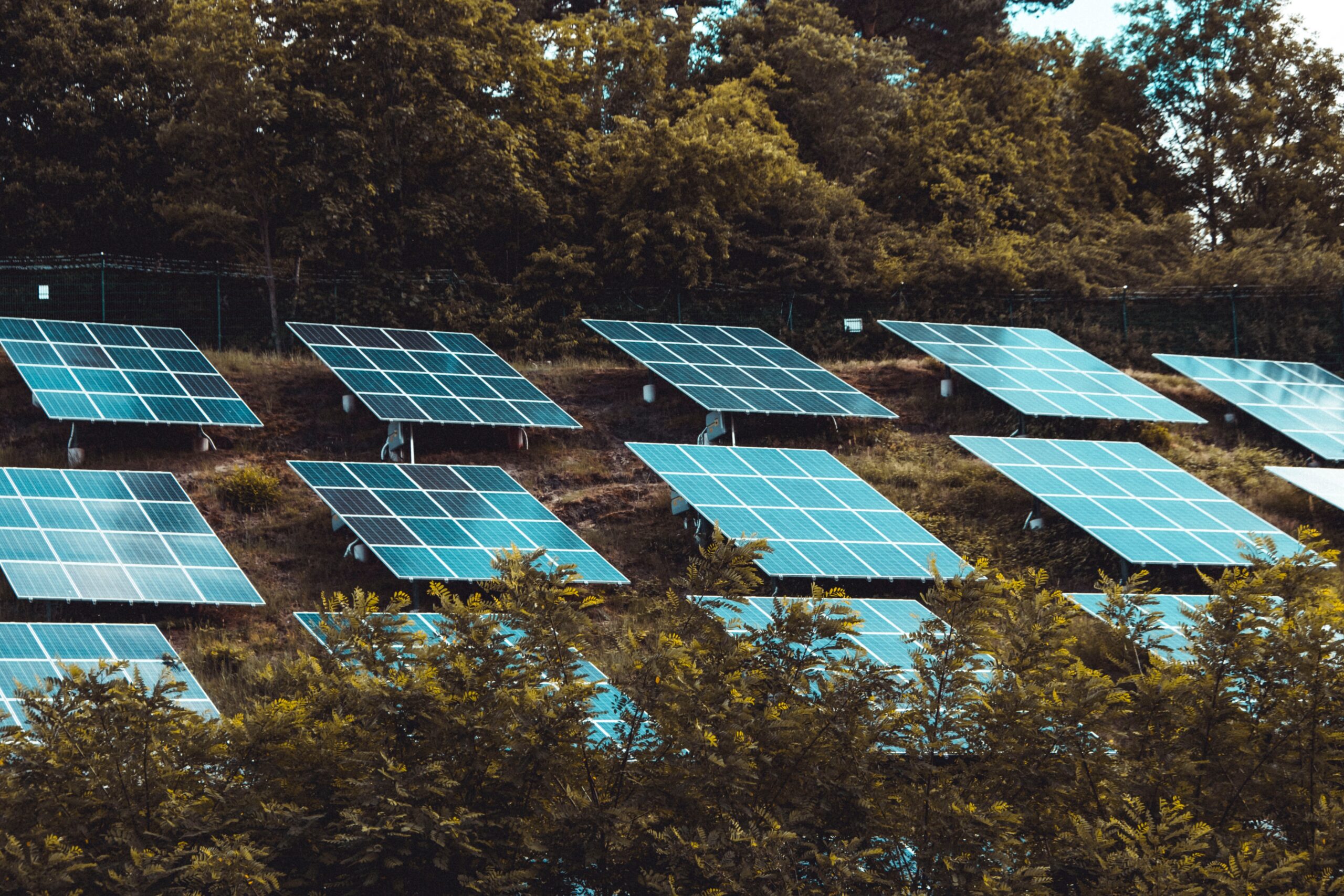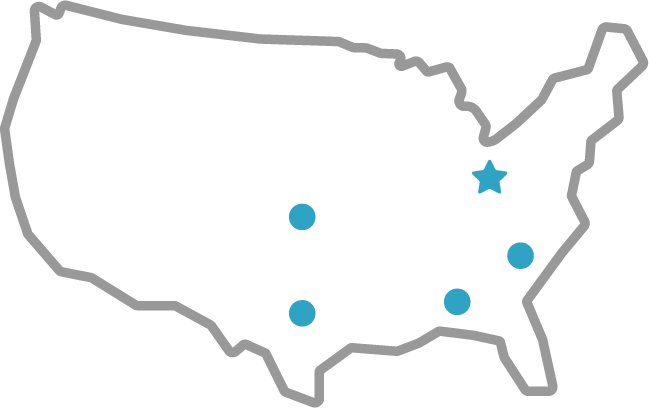Solar Power: Small Scale to Mass Production"America is home to the best researchers, advanced manufacturers, and entrepreneurs in the world. There is no reason we cannot lead the planet in manufacturing solar panels and wind turbines, engineering the smart energy grid, and inspiring the next great companies that will be the titans of a new green energy economy." -Brad Schneider

Solar Panels, and Gardens, and Farms… Oh My!
In September, the JCL Energy Journal took a look at the history of solar power and its pros and cons for the US Electric Grid. Whether you support traditional utilities, solar, or a mix of both, one thing is clear… The push for solar power isn’t going away. It is more and more common to see solar power integrated into both individual homes and communities as a whole. Small scale to big, the integration of solar power systems at each level comes with its own challenges and rewards. This week, the JCL Energy Journal explores the different ways solar power is becoming an integral part of how Americans plan and build.
Solar Power on a Small Scale
Depending on where you live, solar’s popularity with individual home owners varies. In the sunny southwest, solar panels on roofs are so common that it isn’t even noticeable anymore. In other areas of the country where the sun isn’t so consistent, solar power tends to be less common. But solar is growing in popularity. In the last 3 years alone more than 2 million solar systems have been installed in US homes. Installing solar panels is becoming far more affordable for the average American. Since 1977, the cost of solar panels has fallen by 99%, from $77/watt to only $0.21/watt.
Thinking of putting solar panels on your roof? Make sure you consider the pros and cons for your area. Solar power panels on a home have a lot of great benefits in the right location. The initial installation costs are still pricey, but according to a Forbes study homeowners will recoup about 97% of those costs in terms of a rise in home value. As an added bonus, in many states solar panel value is not factored into property taxes, despite raising the value of the home. And even better, a home with solar panels can reduce its carbon footprint by 100 tons over a 30-year period.
There are a few drawbacks to consider. Solar panels are only cost effective in certain areas of the United States because they are sunlight dependent. What’s more, they are difficult to relocate, so if you move you probably can’t take them with you. Additionally, despite their overall benefit to the environment, there is still an impact associated with their manufacture. And there are not many options for disposal or recycling. Furthermore, one of the biggest drawbacks is space requirements. Most homes need about 20 panels for effective solar power. What about the millions of Americans living in urban communities who don’t have their own roof? Well, a new trend is solving that problem…
Solar Power in the Community
The concept of a community garden is a familiar one in urban areas where people don’t have access to enough space in their homes to plant and grow flowers, fruits, and vegetables. Now, a new kind of garden is springing up in cities across America: solar gardens. Over 50% of US households would not have access to rooftop solar without these gardens. Communities are coming together to find a central space ideal for solar panels.
Because solar gardens are still a new concept, where you live determines if you can plan or build one. Certain states have legislation and programs in place to allow for community solar power. In addition, there are areas where electric co-ops and small scale utilities have launched programs for community solar. Unlike solar panels on roofs that connect to a home’s utility service panel, community solar gardens connect directly to the utility distribution grid.
Interested in becoming part of a community solar power garden in your area, if you have one? Most solar gardens have a structure that asks participants to “subscribe” to the project, almost like paying rent in an apartment building. Your subscription cost is usually based on your annual usage. Because the solar power from the garden goes directly to the grid, you usually receive a credit from the utility company that offsets your payment to the solar garden.
Solar Power En Masse
As Americans, we believe that “bigger is better.” Well, the solar community must believe that too. If community solar gardens are good, large-scale solar farms must be better, right? Utility companies looking to add solar power to their energy production process build utility-scale solar farms, or solar power plants. Sometimes, depending on where the farm is located, solar farms may not be owned directly by a utility, but the solar power is sold to a wholesale utility buyer. In either case, the utility controls and distributes the solar power produced to their customers through the grid. Currently, the largest solar farm in the world is in California’s Mojave Desert. No wonder California leads the US in solar production, with 14% of their electricity coming from solar power.
Solar farms can take as much as 5 years to build and can cost between $800,000 to over $1.3 million. They require a significant amount of land, at least 5-7 acres and upward. This accounts for the space needed for the actual panels, as well as related equipment and space in between for service and repair. The amount of land needed has raised some concerns for environmental impact. There are also concerns about how the maintenance needs of a solar farm affect things like groundwater. One solution is to build solar farms on less “pristine” sections of land, like landfills. And as for aesthetics, some solar farms are getting more creative with their setup to keep things interesting. For instance, in China there is a 250-acre solar farm in the shape of a panda.
As We Go Down the Road…
From large scale to small, solar power is continuing to be an upward trend for energy production both in America and worldwide. As states begin to add legislature allowing for larger scale solar power production like gardens and farms, we could see an upswing in community planners using solar as a feature in their designs. Currently, newly-built solar power farms last at least 40 years. Additionally, solar power costs less on average than fossil fuels. Solar power stands poised as a possible solution for both updating and preserving our existing grid structure. Whether sooner or later, JCL Energy is here to support those moving towards solar power production. We know what it takes to get a solar garden or farm up and running, and we’re here to help make it happen! We’re excited about the “sunny” future of renewable energy production.
Sources
Crail, Chauncey. “Solar Energy: Everything You Need To Know.” Forbes Home, Forbes, 14 Oct. 2022, https://www.forbes.com/home-improvement/solar/solar-energy-pros-and-cons/.
“How Many Homes Have Solar Panels? .” Daily Infographic | Learn Something New Every Day, 2 Feb. 2022, https://dailyinfographic.com/how-many-homes-have-solar-panels.
Marsh, Jacob. “Solar Farms: What Are They and How Much Do They Cost? | EnergySage.” EnergySage Blog, EnergySage, 9 Aug. 2022, https://news.energysage.com/solar-farms-start-one/.
“Solar Farms: What Are They & How Do They Work? | Chariot Energy.” Chariot Energy, https://chariotenergy.com/chariot-university/solar-farms/ . Accessed 1 Nov. 2022.
“What Is a Solar Garden?” Pivot Energy, 29 Nov. 2019, https://www.pivotenergy.net/blog/what-is-a-solar-garden.


